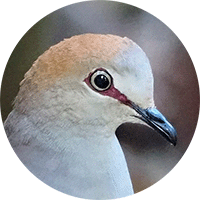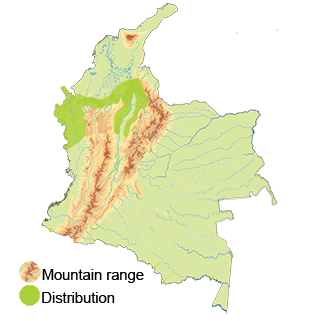Gray-chested Dove
The Gray-chested Dove (Leptotila cassinii). Read in Spanish
Appearance: The Gray-chested Dove is a medium-sized bird measuring about 25 cm in length. It has a predominantly brownish-gray plumage with a distinctive gray chest and belly. The wings and tail are a darker shade of brown, and the eyes are dark with a prominent reddish ring around them. The bill is black and the legs are reddish.
Habitat: The Gray-chested Dove is typically found in moist forests, forest edges, and secondary growth habitats.
Behavior: Like many doves, the Gray-chested Dove is often seen foraging on the ground for seeds, fruits, and insects. It is a relatively shy bird and tends to stay hidden in thick vegetation to avoid predators. These doves are known for their gentle cooing calls, especially during the breeding season.
Breeding: The Gray-chested Dove builds its nest in trees or bushes, constructing a simple platform of twigs and leaves. The female usually lays one or two eggs, which both parents take turns incubating for about two weeks. Both parents also participate in caring for the chicks after they hatch.
Conservation Status: The Gray-chested Dove is classified as "Endangered" on the IUCN Red List.
Distribution
The Gray-chested Dove (Leptotila cassinii)
- Pacific Coast Region: The Gray-chested Dove is known to inhabit portions of the Pacific Coast region in Colombia. This area includes the Chocó biogeographic region, characterized by lush tropical rainforests and high levels of biodiversity.
- Magdalena Valley Region: This species may also occur in the Magdalena Valley region of Colombia, which is known for its diverse ecosystems, including tropical and subtropical forests where the doves can thrive.
- Central and Eastern Regions: The Gray-chested Dove's distribution may extend into the central and eastern regions of Colombia, where suitable habitat such as moist and humid forests can be found.
Taxonomy
The Gray-chested Dove (Leptotila cassinii)
- Kingdom: Animalia
- Phylum: Chordata
- Class: Aves (Birds)
- Order: Columbiformes
- Family: Columbidae
- Genus: Leptotila
- Species: Leptotila cassinii
Vocalization
The Gray-chested Dove (Leptotila cassinii)
- Cooing Calls: Gray-chested Doves are known for their low, soft cooing calls that are often repeated in a rhythmic pattern. These calls are typically used for communication between mates or to establish territory boundaries.
- Advertising Calls: Male Gray-chested Doves may produce advertising calls during the breeding season to attract females. These calls are often more elaborate and may involve a series of coos or trills.
- Alarm Calls: When disturbed or threatened, Gray-chested Doves may emit alarm calls, which are typically short and sharp sounds that alert other doves to potential danger in the vicinity.
- Contact Calls: Gray-chested Doves also use contact calls to stay in touch with their mate or family members while foraging or moving through their habitat. These calls help the doves maintain social cohesion.
- Nesting Calls: During the breeding season, Gray-chested Doves may produce specific calls near their nests to communicate with their mate or offspring. These calls may vary in intensity and frequency depending on the situation.




